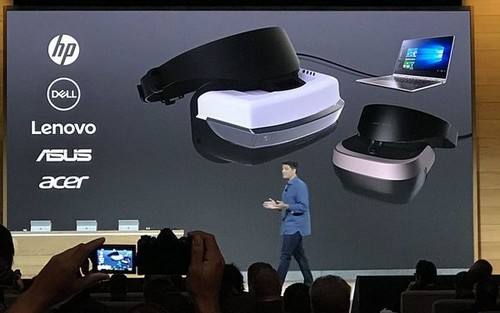Since Microsoft entered the VR world, many big moves have emerged, and various black technologies have become obsolete, and they must dominate the VR industry! Improved VR and 3D immersive communications have always been the cornerstone of Microsoft's long-term investment in this technology field, and have thus brought Numerous innovations.

According to Microsoft, achieving more immersive communication through 3D applications requires a huge leap in the capture and exchange of 3D geometry, which can only be achieved through continuous signal processing. The core of this work is the Microsoft-Academic Partner's Cooperative Research (CORE) program, including Dr. Gene Cheung, Associate Professor of the National Institute of Informatics, Japan.
Using depth-sensing devices such as Kinect sensors, researchers have developed a method that can better reduce noise and restore missing details in the image. Crucially, they discovered a way to use the smoothness of the graphics signal before enhancing natural and depth images. Dinei Florencio, a senior researcher at Microsoft Research Asia, has been working with Professor Cheung on "rate-constrained 3D surface estimation" and "precision enhancement of multiple 3D depth maps."
Florenicio said: "These two research lines are the most active projects in our recent cooperation. When we make the necessary progress in immersive communication, I believe Gene's research will bring some core contributions." Other key members include Cha Zhang and Philip Chou of Microsoft Research, and Pengfei Wan, a graduate student at the Hong Kong University of Science and Technology.
Florencio and Chueng are now investigating whether active light sensing can accurately detect informational biological signals (such as facial pulse/breath rate and temperature changes). A key question in the study is whether active light sensing can be extended to reveal the same details of shadows or remote human subjects.
Tao Mei, a senior researcher at the Microsoft Research Institute, said: "The project is very interesting because it tries to estimate biological signals to achieve more effective face-to-face communication. The main investigators proposed methods using completely non-contact and non-invasive active imaging - Analyze the novel idea of ​​heat and depth images constructed in indoor active image sensing systems to solve this problem.
After completion, Prof. Cheung will publish the research tool. We are looking forward to the continuous progress and achievements of this project. We hope that more researchers can explore this field, expand the frontiers of virtual reality technology, and realize the kind of holographic message that Princess Leia in Star Wars will deliver in the future.
We hope that this technology can be developed more thoroughly and thoroughly. This will be a beautiful experience for small partners who use VR devices in the future!
Pod Systems 4x2ml
we offer low price, high quality Rechargeable Pod System,Aurora Play Vape Pod System, etc. Aurora Pod Systems,380Mah Pod System,Rechargeable Pod System,Aurora Play Vape Pod System to all over the world, offer low price, high quality Rechargeable Pod System,Aurora Play Vape Pod System, etc. Aurora Pod Systems,380Mah Pod System,Rechargeable Pod System,Aurora Play Vape Pod System to all over the world.




Aurora Pod Systems,380Mah Pod System,Rechargeable Pod System,Aurora Play Vape Pod System
Shenzhen Wei Ka Technology Co.,Ltd. , https://www.zgarvape.com